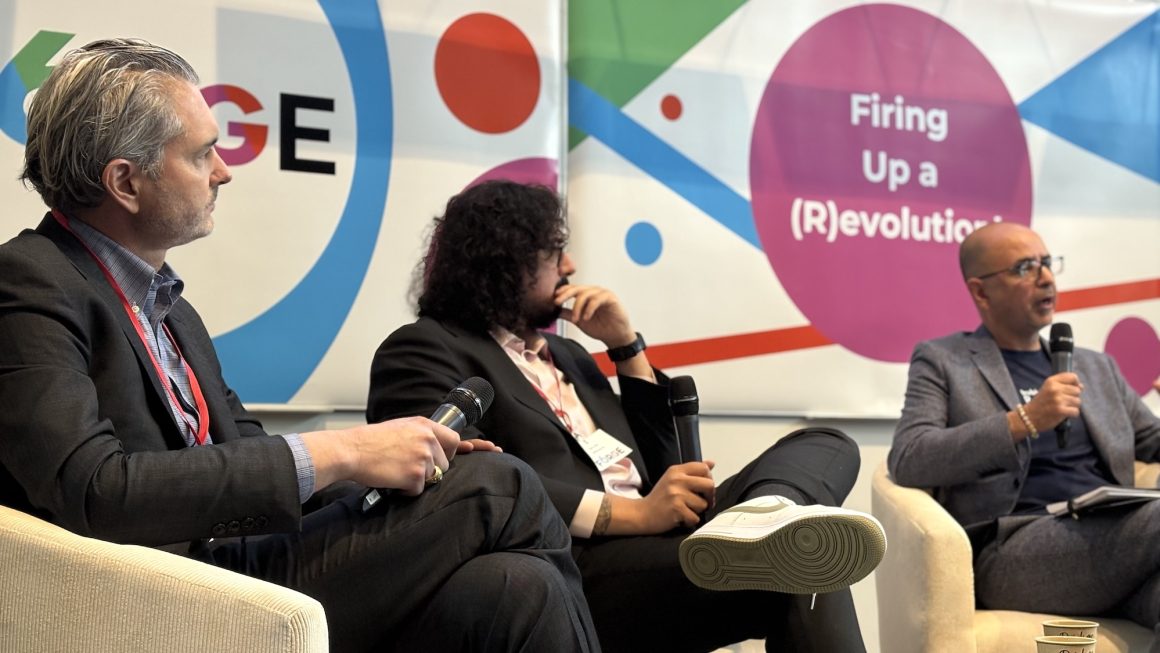At 6G Forge last month, we put this question to Gerhard Schoenthal, COO of Virginia Diodes, Ben Coffin, Chief Global Business Manager at National Instruments, and Navid Nikaein, CEO at BubbleRAN.
Messaging around new network technologies tends to focus on delivering maximum capacity for the least amount of cost. Especially at the radio, where so much time and cost to build out is involved, it makes a compelling ROI argument for the CFO.
While that helps maintain growth in demand, it doesn’t grow business revenues. As we move from early 5G through different iterations on the way to 6G, are there opportunities to change that and deliver more business value?
Old & New
“Now we are in exploration phase,” Nikaein commented. “Customers are looking at how they can monetise O-RAN or AI in their existing infrastructure… It’s more like a hybrid type of thinking, how they can combine Wi-Fi, 5G and so on. And the first thing is how to leverage AI”
Nikaein gave the example of an automated network assistant for operation, optimization, or even scheduling a maintenance technician. While helpful for telcos, in private 5G that would already be a valuable way to simplify the experience for customers.
Private networks aren’t a new service by any means, but timing can mean a great deal. Schoenthal pointed at the use of fixed wireless access [FWA] in 5G.
“FWA has been a runaway success, especially in the United States,” he observed. However, FWA “Was old and then new again”. While some kinds of service had existed for a long time, “In 5G it was set up to handle CPEs in a way that it works at scale for the first time.”
Coffin agreed, pointing to the example of full duplex, something which many researchers are working on today. He noted that, although it was explored in 4G, revisiting it for an evolution through 5G and beyond to enable better spectral efficiency might be very useful. However, despite being and ‘old and new’ technology,
“When we look at 3GPP the full duplex pieces still aren’t adopted in a way which we’d want.”
Simplicity
“We’ve heard from the operators and network equipment providers that 6G needs to be simpler,” commented Coffin.
However, he pointed out the dichotomy between that requirement and the demands for an ever-increasing set of capabilities. “We need to be realistic about what simplicity means.”
The discussion turned to the concept of making something fundamentally much simpler, but software-based.
“If we are able to simplify the network, can we add an abstraction layer around that which really lets people interact with it?” Coffin asked.
This is what Nikaein at BubbleRAN is aiming for, in fact, largely by supporting an open ecosystem which developers can build upon through software development kits.
In many ways, this could be seen as an extension of the existing CAMARA telecoms APIs, but not only them.
Ad-Hoc Opportunity
Nikaein described a concept which broadcasters will be familiar with, but which has scope to gain much more traction: Short-term networks and networks that are created on the spot for a short period of time.
“You need to manage their lifecycle, provide the service and then break it down. So it is more like a self-service type of scenario. That requires quite an agility, being able to deploy a small network without much overhead, without much cost.”
Being able to do this simply and at little cost is a distance away from where we are today with many outside broadcasts, but there are already capabilities in 5G that can and perhaps should enable it, not just from broadcasts but in many other scenarios large and small.
“It could even be a network that I myself create at my home for my friends when they’re coming,” Nikaein suggested.
“That was the concept of network slicing. That goes with the concept of how the network is managed; it is self-service, from my phone I can create my own private 5G network… AI here can be instrumental in assisting someone who doesn’t know 5G to be able to create such a network.”
That same kind of self-service, ad-hoc network would also be valuable in situations for emergency services, defence or many other situations where people gather for a shared purpose.
Coffin noted that “With more of these ad-hoc private networks being stood up we come back to spectrum,” but also that we might come back around to technologies and ideas which didn’t see a major application in the past. For example, 4G Licence Assisted Access [LAA] could support a service like that today, as well as CBRS in the USA.
“Being able to look back at some of these technologies… we have tools in the toolbox to enable that.”
Schoenthal agreed – simplicity, and especially simplicity to operate for non-specialists, is some low-hanging fruit the industry hasn’t yet been able to grasp.
“If I never had to set up a Wi-Fi network again in my life, I would be so happy,” he noted.
“Wi-Fi’s been great… but the QoS in a lot of instances is suspect. Having networks that can be set up in a private, ad-hoc… fashion so that people can come onto it and ‘Ah, it works!’” (Drops mic).
Are We Missing a Trick With AI?
Conversation turned inevitably to AI. While it’s been leveraged to automate existing services or make them more efficient, how could we usefully leverage AI to improve or create new capabilities?
Schoenthal noted some potential quick wins. Qualcomm has been using AI for active channel sounding to determine where there were dead spots in coverage. “Can we use AI to improve the engineering of our products?” He asked.
He also suggested that this could be a helpful way to improve our understanding of how networks are performing in the world; for example, to have end-user devices report back to an AI to find and remove coverage holes in 5G.
Coffin also highlighted the data collection question as a fundamental which will then open up other opportunities.
“Researchers don’t have the datasets the operators have, so step one is getting the data to check whether the AI being developed is performant or not,” he pointed out.
Not having the correct data to train and validate AI models can lead to significant problems and AIs unable to cope with the situations they encounter in a live environment.
“If we train AI on the wrong set of data, we create blind spots very quickly,” he warned.
Lost Legacy
Simplification in a network sounds great but would only work effectively if it allowed operators to eradicate their legacy networks and systems. If so, that would likely make the business case by itself, both in cost saving and simplifying new service enablement.
“That’s 100% the case,” Schoenthal noted.
“If you look at players like AT&T in the United States, they want to sunset their DSL network, their wireline network. How are they doing that? By bringing in FWA to places that would have been served by DSL because they can’t get the fibre there quick enough. And maybe that’s a conversation we should be talking about more – how they do that, how they strip off these legacy systems quicker.”
Coffin agreed, not least because of sustainability opportunities. “5G is a very energy efficient standard,” he noted.
Replacing legacy systems with ones that are as efficient as 5G or more would enable a great deal more sustainability and energy saving. That reduction would be all the more welcome “especially because we’re going to put all this AI into the network and that’s going to burn energy, so we have to make up for that somewhere”
Building New Revenues
While we’ve discussed cost savings, simplicity and the value to be gained from a better customer experience, we still need to talk about one very important element: Where can telcos pull in fresh injections of money? The panel believes there are opportunities, but we need to do things differently.
Nikaein pointed to the example of Ericsson introducing an ecosystem around rApps to set up two-sided business models. “They’re bringing developers into the ecosystem. They have a portal, they have users, they have developers.”
The key point for Nikaein is that this sets up an open ecosystem, in which open source is only a tiny part. In these ecosystems creativity can thrive.
“If it brings developers into the network domain… enriching the network… then I think that will create more dynamism for the network,” he said.
Meanwhile Coffin focused on enterprises. “We talk about offering services to the verticals, but are we offering them services that they want?” He asked.
The answer? Probably not, because at present we tend to sell technology. Coffin pointed to the agricultural sector, where farmers tend to be very much focused on the business of farming. He highlighted a series called Carbon Cowboys as an example.
“These ranchers have developed a technique that rebuilds their grasslands, creates more water-retentive soil and is reducing the overhead for them to run these farms. Let’s go get John Deere, implement these farming practices in the farming robots they’re building, and put them on a network. That’s a service, that’s how you go sell a service to these verticals.”
The full recording of the session is available on the TelcoForge website or on YouTube.



